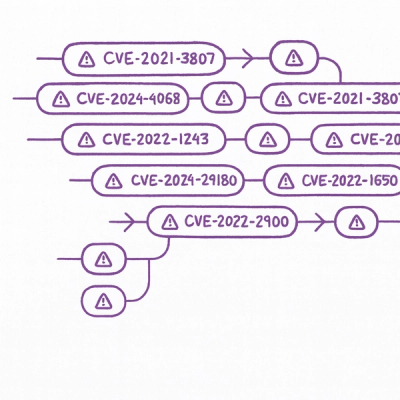
Security News
New Website “Is It Really FOSS?” Tracks Transparency in Open Source Distribution Models
A new site reviews software projects to reveal if they’re truly FOSS, making complex licensing and distribution models easy to understand.

Tiltout is a small abstraction over Tilt that allows you to render templates with some additional conveniences:
Let's say we have a template, ~/projects/tiltout/templates/greet.erb:
<h1><%= @title = greet("Hey", name) %></h1>
And another template, ~/projects/tiltout/templates/layout.erb:
<!DOCTYPE html>
<html>
<head>
<title><%= @title %></title>
</head>
<body>
<%= yield %>
</body>
</html>
Then the following code:
require "tiltout"
module Greeter
def greet(greeting, name)
"#{greeting} #{name}!"
end
end
out = Tiltout.new("~/projects/tiltout/templates", :layout => "layout")
out.helper(Greeter, { :name => "Chris" })
html = out.render(:greet)
Will produce the following HTML:
<!DOCTYPE html>
<html>
<head>
<title>Hey Chris!</title>
</head>
<body>
<h1>Hey Chris!</h1>
</body>
</html>
Tiltout can be instantiated with a default layout that will be used for every
template. You can also optionally override the layout for each individual
template to render.
Layouts are rendered with the same context as templates, and are rendered after the template itself. This means that you can set instance variables in the template that can be used in the layout (useful for e.g. extra head data, title etc).
Templates are included in the layout where the layout yields, e.g.:
<!DOCTYPE html>
<html>
<head>
<title><%= @title %></title>
</head>
<body>
<%= yield %>
</body>
</html>
Given the following template:
<h1><%= @title = "Hey!" %></h1>
The following output would be produced:
<!DOCTYPE html>
<html>
<head>
<title>Hey!</title>
</head>
<body>
<h1>Hey!</h1>
</body>
</html>
Tiltout provides a convenient API for registering modules that are included in
the rendering context so you can call the module's methods as "helpers" from
your templates:
<!-- greet.erb -->
<h1>Hey <%= snake_case(name) %></h1>
require "tiltout"
module SnakeCaser
def snake_case(text)
text.gsub(/(.)([A-Z])/,'\1_\2').downcase
end
end
out = Tiltout.new("path/to/templates")
out.helper(SnakeCaser)
out.render(:greet, { :name => "ChrisJohansen" })
#=> "<h1>Hey chris_johansen</h1>"
By default, Tiltout will cache your templates after reading them from file the
first time. If you don't want caching - say because you're actively developing
the template - you simply disable it when instantiating your Tiltout instance:
out = Tiltout.new("path/to/templates", :cache => false)
tiltout ships as a gem:
$ gem install tiltout
Or in your Gemfile:
gem "tiltout", "~> 1.0.0"
Contributions are welcome. To get started:
$ git clone git://gitorious.org/gitorious/tiltout.git
$ cd tiltout
$ bundle install
$ rake
When you have fixed a bug/added a feature/done your thing, create a clone on Gitorious or a fork on GitHub and send a merge request/pull request, whichever you prefer.
Please add tests when adding/altering code, and always make sure all the tests pass before submitting your contribution.
Copyright (C) 2012 Gitorious AS
Permission is hereby granted, free of charge, to any person obtaining a copy of this software and associated documentation files (the "Software"), to deal in the Software without restriction, including without limitation the rights to use, copy, modify, merge, publish, distribute, sublicense, and/or sell copies of the Software, and to permit persons to whom the Software is furnished to do so, subject to the following conditions:
The above copyright notice and this permission notice shall be included in all copies or substantial portions of the Software.
THE SOFTWARE IS PROVIDED "AS IS", WITHOUT WARRANTY OF ANY KIND, EXPRESS OR IMPLIED, INCLUDING BUT NOT LIMITED TO THE WARRANTIES OF MERCHANTABILITY, FITNESS FOR A PARTICULAR PURPOSE AND NONINFRINGEMENT. IN NO EVENT SHALL THE AUTHORS OR COPYRIGHT HOLDERS BE LIABLE FOR ANY CLAIM, DAMAGES OR OTHER LIABILITY, WHETHER IN AN ACTION OF CONTRACT, TORT OR OTHERWISE, ARISING FROM, OUT OF OR IN CONNECTION WITH THE SOFTWARE OR THE USE OR OTHER DEALINGS IN THE SOFTWARE.
FAQs
Unknown package
We found that tiltout demonstrated a not healthy version release cadence and project activity because the last version was released a year ago. It has 1 open source maintainer collaborating on the project.
Did you know?

Socket for GitHub automatically highlights issues in each pull request and monitors the health of all your open source dependencies. Discover the contents of your packages and block harmful activity before you install or update your dependencies.

Security News
A new site reviews software projects to reveal if they’re truly FOSS, making complex licensing and distribution models easy to understand.

Security News
Astral unveils pyx, a Python-native package registry in beta, designed to speed installs, enhance security, and integrate deeply with uv.

Security News
The Latio podcast explores how static and runtime reachability help teams prioritize exploitable vulnerabilities and streamline AppSec workflows.